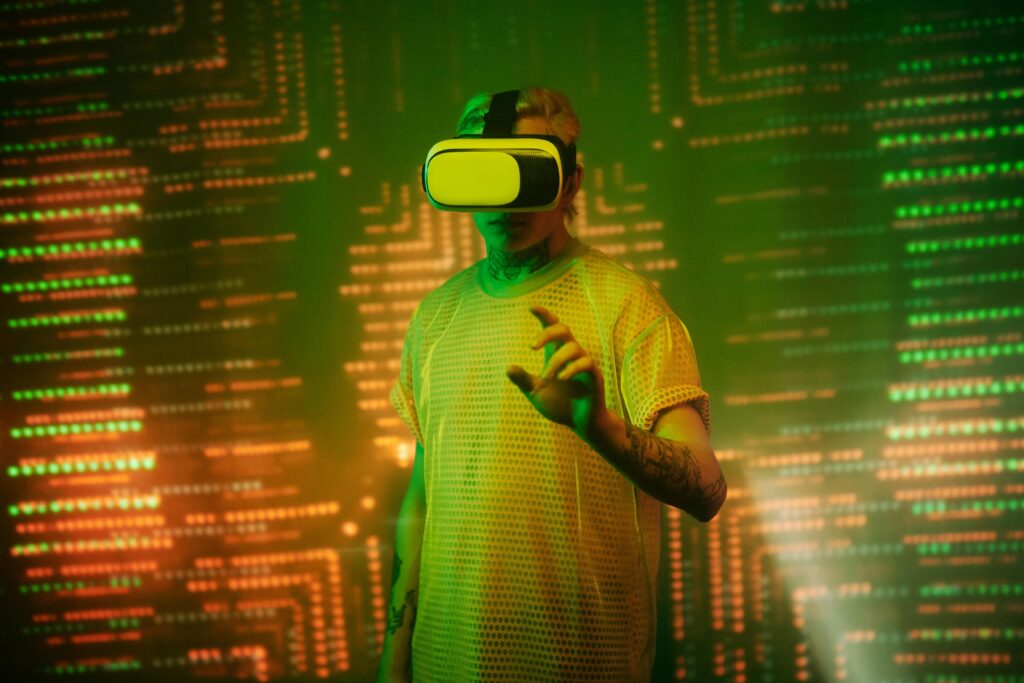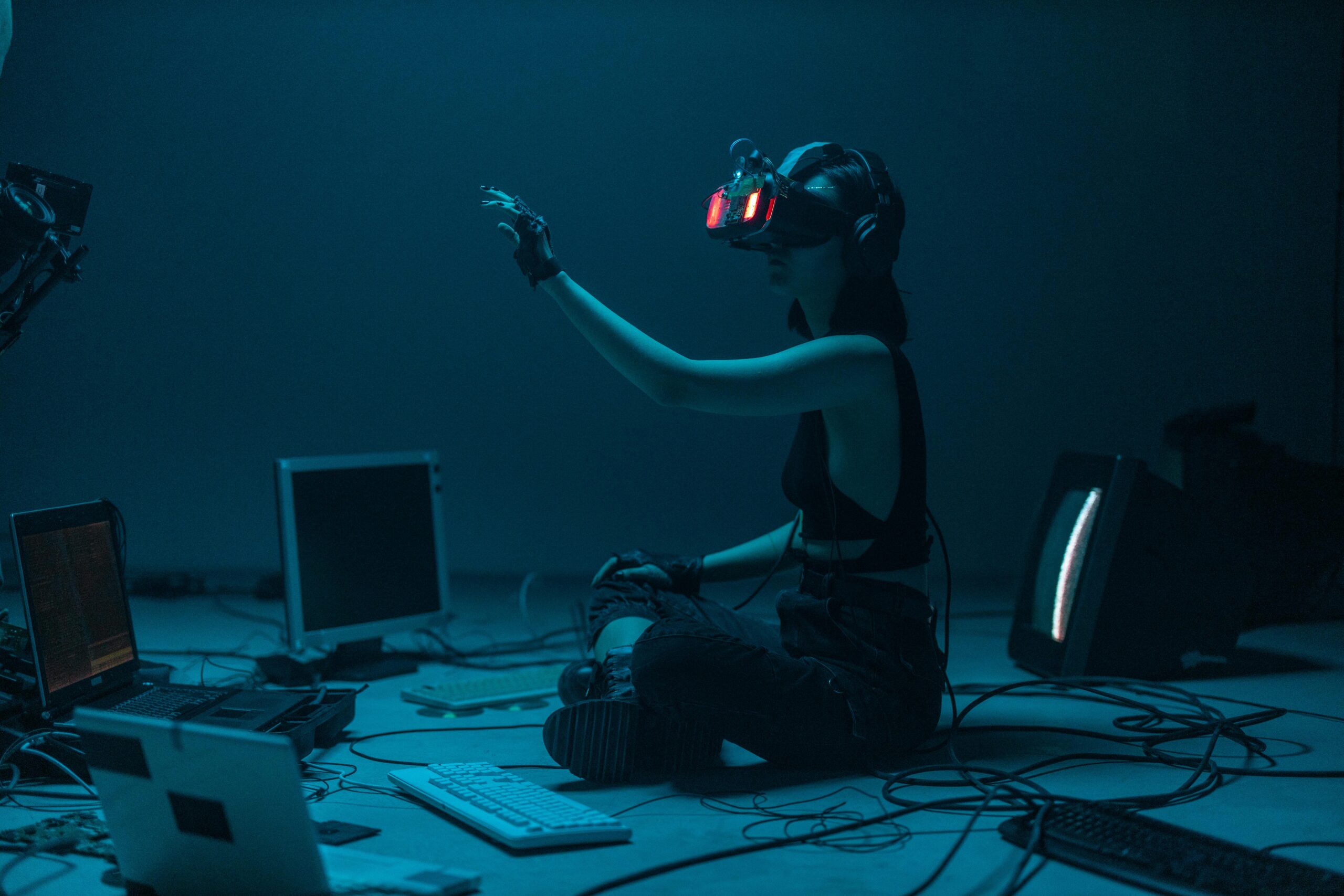In the rapidly evolving landscape of artificial intelligence, Google DeepMind has once again pushed the boundaries of what’s possible with the release of Genie 3, their most advanced world model to date. This groundbreaking AI system represents a quantum leap in generative interactive environments, offering capabilities that seemed like science fiction just months ago. As we stand at the threshold of what many consider a stepping stone toward artificial general intelligence (AGI), Genie 3 emerges as a testament to the remarkable pace of AI advancement and the potential for AI-generated interactive content.
Understanding Genie 3: The Next Evolution of World Models
Genie 3 is Google DeepMind’s latest iteration in their series of Generative Interactive Environments, designed to create fully interactive 3D worlds from simple text prompts. Unlike traditional game engines or rendering systems, Genie 3 operates entirely through AI generation, creating each frame dynamically without relying on pre-built assets, physics engines, or traditional rendering pipelines.
The model’s core capability lies in its ability to generate dynamic worlds that users can navigate in real-time at 24 frames per second, maintaining consistency for several minutes at 720p resolution. This represents a significant technological achievement, as the system must not only generate realistic visual content but also maintain spatial consistency, physics-like behavior, and respond to user interactions in real-time.
What makes Genie 3 particularly remarkable is its approach to understanding and simulating the world. Rather than relying on hard-coded physics engines, the model teaches itself how the world works by remembering what it has generated and reasoning over extended time horizons. This self-learning approach to physics and environmental behavior represents a fundamental shift in how AI systems can understand and simulate reality.
Recent Developments and Technical Achievements

The announcement of Genie 3 came just days ago, marking a rapid advancement from its predecessor. The model introduces several groundbreaking features that set it apart from previous iterations and competing technologies. Most notably, Genie 3 is the first world model to allow interaction in real-time while simultaneously improving consistency and realism compared to Genie 2.
One of the most significant recent developments is the introduction of “promptable world events,” a capability that allows users to dynamically alter the state of simulated worlds through text prompts. During demonstrations, DeepMind showed how the model could insert a herd of deer into a skiing scene in real-time, showcasing the system’s ability to modify environments on the fly based on natural language instructions.
The technical specifications of Genie 3 are impressive by any measure. The system generates completely interactive 3D environments from text prompts, supporting multiple minutes of consistent simulation with real-time rendering capabilities. Each frame is entirely AI-generated, with no traditional rendering or image input involved, making it a pure AI creation from start to finish.
Recent partnerships have also accelerated the model’s accessibility. GPTBots.ai has become one of the first partners to offer developer access to Genie 3 technology, suggesting that the practical applications of this technology are already being explored beyond research settings. This partnership indicates Google DeepMind’s commitment to making their advanced AI capabilities available to developers and researchers worldwide.
Comparing Genie 3 with Its Predecessors
To fully appreciate the significance of Genie 3, it’s essential to understand how it evolved from its predecessors. The Genie series represents one of the most dramatic examples of rapid AI advancement, with each iteration delivering exponential improvements over remarkably short timeframes.
Genie 1: The Foundation (February 2024)
The original Genie model, introduced in February 2024, was groundbreaking in its own right but limited to 2D environments. Genie 1 was trained from internet videos and could generate playable, action-controllable worlds from synthetic images, photographs, and even sketches. However, its capabilities were constrained to two-dimensional interactions and relatively simple environmental dynamics.
The original model established the fundamental concept of generative interactive environments, proving that AI could create not just static images or videos, but interactive worlds that responded to user input. This represented a new paradigm for generative AI, moving beyond content creation to environment generation.
Genie 2: The 3D Breakthrough (December 2024)
Just ten months after the original Genie, DeepMind released Genie 2, which stunned the AI industry by achieving a world model for 3D graphics. This iteration supported first-person and third-person control through standard mouse-look and WASD or arrow key controls, making it feel remarkably similar to traditional gaming interfaces.
Genie 2 operated at 360p resolution at 15 frames per second and could maintain consistent environments for approximately 10-20 seconds. While these specifications might seem modest by today’s gaming standards, they represented an extraordinary achievement for AI-generated content. The model could create endless varieties of playable 3D worlds from single image prompts, effectively generating entire game-like environments on demand.
However, Genie 2 had notable limitations. The interaction was not truly real-time, requiring moments to generate the next frame after receiving user input. Additionally, the relatively short duration of consistent simulation (10-20 seconds) limited its practical applications.
Genie 3: The Real-Time Revolution (August 2025)
Genie 3 addresses virtually every limitation of its predecessors while introducing capabilities that seemed impossible just months ago. The improvements are dramatic across multiple dimensions:
Resolution and Performance: Genie 3 operates at 720p resolution at 24 frames per second, doubling the resolution and significantly improving the frame rate compared to Genie 2. This brings the visual quality much closer to modern gaming standards.
Duration: Perhaps the most significant improvement is the extended simulation time. While Genie 2 could maintain consistency for 10-20 seconds, Genie 3 can generate coherent environments for multiple minutes, making it practical for extended interactions and exploration.
Real-Time Interaction: Unlike Genie 2’s delayed response system, Genie 3 processes user input and generates responses in real-time, creating a seamless interactive experience that feels natural and responsive.
Dynamic World Modification: The introduction of promptable world events allows users to modify the environment during interaction using natural language, a capability entirely absent from previous versions.
Improved Physics Understanding: Genie 3 demonstrates more sophisticated understanding of how objects move, fall, and interact, creating more believable and consistent environmental behavior.
Technical Architecture and Innovation
The technical architecture underlying Genie 3 represents a remarkable achievement in AI engineering. The system operates on a fundamentally different principle from traditional game engines or rendering systems. Instead of relying on pre-programmed physics engines, asset libraries, or rendering pipelines, Genie 3 generates everything from scratch using its understanding learned from training data.
The model’s ability to maintain spatial consistency over extended periods while generating completely new content frame by frame suggests sophisticated internal representations of three-dimensional space, object permanence, and physical laws. This is particularly challenging because the system must track the position and state of multiple objects across time while generating visually consistent content that responds appropriately to user actions.
The real-time processing capability implies significant optimization in the model’s architecture. Generating 720p frames at 24 fps requires producing over 17 million pixels per second, each calculated based on the model’s understanding of the environment, user input, and temporal consistency requirements. Achieving this while maintaining quality and consistency represents a significant computational achievement.
Applications and Implications

The potential applications of Genie 3 extend far beyond entertainment and gaming. The technology has implications for education, training, simulation, content creation, and research. Educational applications could include immersive historical recreations, scientific simulations, or interactive learning environments generated from textbook descriptions.
For training purposes, Genie 3 could generate unlimited training scenarios for autonomous systems, robots, or AI agents. Instead of manually creating training environments, researchers could describe scenarios in natural language and have Genie 3 generate appropriate simulations.
In content creation, the technology could revolutionize how movies, games, and virtual experiences are produced. Rather than spending months or years building digital environments, creators could generate worlds through text descriptions and then refine them through iterative prompts.
The research implications are equally significant. Genie 3 provides a new tool for studying environmental understanding, spatial reasoning, and the relationship between language and visual representation. Researchers can use the system to explore how AI models understand and represent three-dimensional space, physics, and temporal consistency.
Challenges and Limitations
Despite its impressive capabilities, Genie 3 faces several challenges and limitations. The technology is still in its early stages, and certain aspects of the generated environments may not always behave in the most realistic manner. DeepMind’s own demonstrations showed that while deer could be inserted into a skiing scene, their movement patterns weren’t entirely natural.
The computational requirements for Genie 3 are likely substantial, potentially limiting its accessibility and scalability. Real-time generation of high-quality 3D environments demands significant processing power, which may constrain widespread adoption until more efficient implementations are developed.
Quality consistency over extended periods remains a challenge. While Genie 3 can maintain coherent environments for minutes rather than seconds, ensuring perfect consistency over longer durations is still an area for improvement.
The Path Toward AGI
Google DeepMind positions Genie 3 as a stepping stone toward artificial general intelligence, and this claim merits serious consideration. The model demonstrates several capabilities that are considered important for AGI development:
Spatial Understanding: The ability to generate and maintain consistent three-dimensional environments suggests sophisticated spatial reasoning capabilities.
Temporal Consistency: Maintaining coherent environments over time requires understanding of object permanence and causal relationships.
Multi-modal Integration: Combining text understanding with visual generation and interactive response demonstrates integration across different types of information processing.
Dynamic Adaptation: The ability to modify environments based on new text prompts shows flexible reasoning and adaptation capabilities.
Self-Supervised Learning: The model’s ability to learn physics and environmental behavior without explicit programming suggests more general learning capabilities.
These characteristics align with many of the requirements typically associated with more general forms of artificial intelligence, making Genie 3’s positioning as an AGI stepping stone plausible.
Industry Impact and Future Directions
The release of Genie 3 is likely to accelerate development across multiple industries. Gaming companies may need to reconsider their development pipelines and business models as AI-generated content becomes more sophisticated. Virtual reality and augmented reality applications could benefit enormously from on-demand environment generation.
The technology also raises important questions about intellectual property, content creation, and the future of creative industries. If AI can generate unlimited interactive environments from text descriptions, how will this affect the roles of game designers, environmental artists, and content creators?
Future directions for the technology likely include improved realism, extended duration capabilities, integration with virtual and augmented reality systems, and development of specialized models for specific applications like education, training, or simulation.
Conclusion
Genie 3 represents a watershed moment in AI development, demonstrating capabilities that fundamentally change what’s possible with artificial intelligence. The progression from Genie 1’s 2D environments to Genie 3’s real-time interactive 3D worlds in just over a year illustrates the exponential pace of AI advancement.
While challenges remain, the implications of Genie 3 extend far beyond its immediate applications. The technology offers a glimpse into a future where the boundary between imagination and digital reality becomes increasingly fluid, where describing a world can instantly bring it into being, and where AI systems demonstrate understanding that approaches human-like spatial and temporal reasoning.
As we continue to witness the rapid evolution of AI capabilities, Genie 3 stands as a remarkable achievement and a tantalizing preview of what may be possible as we move toward more general forms of artificial intelligence. The journey from static image generation to interactive world creation in such a short timeframe suggests that even more dramatic breakthroughs may be on the horizon, potentially reshaping our understanding of what artificial intelligence can achieve.
The release of Genie 3 marks not just a technological milestone, but a moment that may be remembered as a crucial step in the development of artificial general intelligence. As researchers, developers, and society at large grapple with the implications of these advancing capabilities, one thing remains clear: we are witnessing the emergence of AI systems that are beginning to demonstrate understanding and capabilities that were once thought to be uniquely human. The age of AI-generated interactive realities has begun, and Genie 3 is leading the way into this new frontier.


